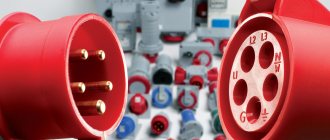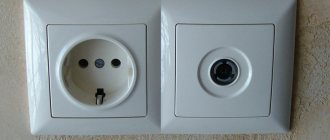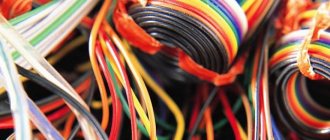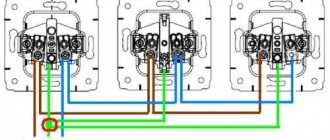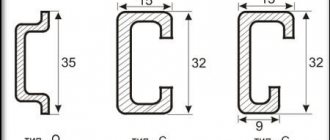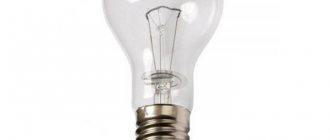The modern electrical goods market offers a large number of types of sockets and switches of various purposes, designs and quality. For the correct and safe operation of such electrical equipment, you need to be able to choose a model for each specific case. Not the last place in the choice is occupied by the manufacturer of electrical goods and the materials used in the production of sockets and switches.
- 2 Types of switches
- 3 How to choose an outlet for your apartment
- 4 What to look for when buying a switch
- 5 Features of choosing sockets and switches for the bathroom
- 6 How to distinguish high-quality devices from low-quality ones
Types of socket connectors
Depending on the country in which certain standards are legislated, sockets differ in the number of contact elements, as well as their shapes and sizes. Moreover, each device has a letter designation approved at the end of the last century by the US Department of Commerce. The classification proposed by the Americans was approved by other countries, and is currently valid throughout the world:
Type A
A is a standard that was once widespread throughout North America. Following the USA, it began to be used in 38 countries. This type consists of two ungrounded flat contacts arranged in parallel. A grounding element is not provided in this case. Today, such devices can still be seen in many older buildings, since they are all compatible with the modern type of plugs. The Japanese standard has certain differences, providing additional requirements for the parameters of product housings.
Type B
B - an improved version of the American standard, supplemented at the bottom of the structure with a long round contact that provides grounding. In addition to the United States, these types of electrical outlets are used in Canada and Mexico. They are also found in several South American countries, including Colombia, Ecuador and Venezuela.
Type C
C is the most common standard in Europe. The so-called Euro socket, consisting of two round contacts, is used, among other things, in the CIS, as well as in the Middle East and most countries of the African continent. There is no grounding in this design. In the Russian Federation, the dimensions and safety requirements for such products are determined by GOST 7396.
Type D
D is an outdated standard previously used by the British in territories that belonged to the British Empire. At the moment, sockets with three round contacts located at the vertices of a triangle are mainly used in India, and are also found in old houses in other countries, where the British once had a hand in arranging power supply lines.
Type E
E is a modern French standard, differing from type C by the presence of a grounding contact, which is located at the top of the device. Similar electrical network elements are also used in Belgium and Poland. At one time they were introduced into the territory of the former Czechoslovakia.
Type F
F - European standard in the form of a design of two round contacts, complemented by grounding brackets at the top and bottom. Initially, such devices appeared in Germany and began to be used for alternating current. These types of sockets and plugs are also called "Schuko", which is an abbreviation for the German Schutzkontakt, literally translated meaning "safety contact". The products are fully compatible with Russian and Soviet-made plugs.
Type G
G is a British standard that requires a fuse located inside the plug. The device consists of three flat contacts, two of which are located at the bottom and one at the top. It is possible to connect Euro plugs using a special adapter, which must also have a built-in fuse. This type of electrical network elements is supported in Ireland, as well as in the territories of some states that were once British colonies.
Type H
H is the Israeli standard, which consists of three round contacts (until 1989, flat elements were used), forming the Latin letter Y with its arrangement. This type of connection to the electrical network is unique because it is used exclusively in Israel. Other types of sockets and plugs are absolutely incompatible with it.
Type I
I is a standard common in Australia and New Zealand. Two flat contacts are installed at an angle. The third is located vertically at the bottom and is a grounding element. Similar types of electrical outlets are used in Papua New Guinea, as well as in the Republic of Fiji Islands.
Type J
J is a Swiss standard that has some similarities with type C, but differs in the presence of a grounding contact set to the side. When connecting Euro plugs there is no need to use adapters.
Type K
K is a Danish standard, the only difference from the French type is the location of the grounding contact, installed directly in the plug, and not in the socket structure.
Type L
L is an Italian standard, suggesting compatibility with type C Euro plugs. The design consists of three round contacts forming a horizontal row.
In some cases, older British designs still used in South Africa may be designated with the letter M.
ASIA
| COUNTRIES | CONNECTOR TYPE | VOLTAGE | FREQUENCY |
| Afghanistan | C,F | 220 V | 50 Hz |
| Saudi Arabia | A,B,F,G | 110V / 220V | 60 Hz |
| Bahrain | G | 230 V | 50 Hz |
| Bangladesh | A,C,D,G,K | 220 V | 50 Hz |
| Butane | D,F,G | 230 V | 50 Hz |
| Burma | C,D,F,G | 230 V | 50 Hz |
| China | A,I,G | 220 V | 50 Hz |
| Cyprus | G | 240 V | 50 Hz |
| Philippines | A,B,C | 220 V | 60 Hz |
| India | C,D | 230 V | 50 Hz |
| Indonesia | C,F,G | 127 V / 230 V | 50 Hz |
| Iraq | C,D,G | 230 V | 50 Hz |
| Iran | C,F | 230 V | 50 Hz |
| Israel | H,C | 220 V | 50 Hz |
| Japan | A,B | 100 V | 50 Hz / 60 Hz |
| Yemen | A,D,G | 220 V / 230 V | 50 Hz |
| Cambodia | A,C | 230 V | 50 Hz |
| Qatar | D,G | 240 V | 50 Hz |
| Kazakhstan | C | 220 V | 50 Hz |
| Korea, South | A, B, C, F | 110V / 220V | 60 Hz |
| North Korea | A,C | 110V / 220V | 60 Hz |
| Kuwait | D,G | 240 V | 50 Hz |
| Laos | A,B,C,E,F | 230 V | 50 Hz |
| Lebanon | A,B,C,D,G | 110V / 220V | 50 Hz |
| Macau | D,G | 220 V | 50 Hz |
| Maldives | A,D,G,J,K,L | 230 V | 50 Hz |
| Malaysia | G | 240 V | 50 Hz |
| Mongolia | C,E | 220 V | 50 Hz |
| Nepal | C,D | 230 V | 50 Hz |
| Oman | G | 240 V | 50 Hz |
| Pakistan | C,D | 220 V | 50 Hz |
| Singapore | G | 230 V | 50 Hz |
| Sri Lanka | D | 230 V | 50 Hz |
| Syria | C,E,L | 220 V | 50 Hz |
| Tajikistan | C,l | 220 V | 50 Hz |
| Thailand | A,C | 220 V | 50 Hz |
| Taiwan | A,B | 110 V | 60 Hz |
| Turkmenistan | B,F | 220 V | 50 Hz |
| Türkiye | C,F | 230 V | 50 Hz |
| Uzbekistan | C,l | 220 V | 50 Hz |
| Vietnam | A,C,G | 127 V / 220 V | 50 Hz |
| ZEA | G | 220 V | 50 Hz |
Technical characteristics of sockets: voltage and frequency
According to European standards, voltage indicators in the electrical network are usually 220-240 or 380V. Sockets designed for 220 Volts are usually used to connect various electrical appliances whose power does not exceed 3.5 kW. This limitation is due to the inability of standard devices designed for low-power household appliances to cope with current levels beyond 16A.
For more powerful electrical appliances, it is recommended to use industrial three-phase sockets, for which the permissible current is 32A. Such products are designed for voltage 380V.
In addition, for different types of sockets a certain frequency of alternating current is provided, the indicators of which are 50 or 60 Hz. The most common European standard, including that used in Russia, is designed for the first option.
EUROPE
| COUNTRIES | CONNECTOR TYPE | VOLTAGE | FREQUENCY |
| Albania | C, F | 220 V | 50 Hz |
| Andorra | C, F | 230 V | 50 Hz |
| Armenia | C,F | 220 V | 50 Hz |
| Austria | F | 230 V | 50 Hz |
| Azerbaijan | C,F | 220 V | 50 Hz |
| Belgium | E | 230 V | 50 Hz |
| Belarus | C,F | 220 V | 50 Hz |
| Bosnia | C,F | 220 V | 50 Hz |
| Bulgaria | C,F | 230 V | 50 Hz |
| Croatia | C,F | 230 V | 50 Hz |
| Cyprus | G | 24-0 V | 50 Hz |
| Montenegro | C,F | 220 V | 50 Hz |
| Czech | E | 230 V | 50 Hz |
| Denmark | C,K | 230 V | 50 Hz |
| Estonia | F | 230 V | 50 Hz |
| Finland | C,F | 230 V | 50 Hz |
| France | E | 230 V | 50 Hz |
| Gibraltar | C,G | 240 V | 50 Hz |
| Greece | C,D,E,F | 220 V | 50 Hz |
| Georgia | C | 220 V | 50 Hz |
| Spain | C,F | 230 V | 50 Hz |
| Netherlands | C,F | 230 V | 50 Hz |
| Iceland | C,F | 220 V | 50 Hz |
| Kazakhstan | C | 220 V | 50 Hz |
| Lithuania | C,F | 220 V | 50 Hz |
| Liechtenstein | J | 230 V | 50 Hz |
| Luxembourg | C,F | 220 V | 50 Hz |
| Latvia | C,F | 220 V | 50 Hz |
| Macedonia | C,F | 220 V | 50 Hz |
| Malta | G | 240 V | 50 Hz |
| Monaco | C,D,E,F | 127 V / 220 V | 50 Hz |
| Germany | C,F | 230 V | 50 Hz |
| Norway | C,F | 230 V | 50 Hz |
| Poland | C,E | 230 V | 50 Hz |
| Portugal | C,F | 230 V | 50 Hz |
| Russia | C,F | 220 V | 50 Hz |
| Romania | C,F | 230 V | 50 Hz |
| Serbia | C,F | 220 V | 50 Hz |
| Scotland | G | 230 V | 50 Hz |
| Switzerland | J | 230 V | 50 Hz |
| Sweden | C,F | 230 V | 50 Hz |
| Slovakia | E | 230 V | 50 Hz |
| Slovenia | C, F | 230 V | 50 Hz |
| Türkiye | C,F | 230 V | 50 Hz |
| Ukraine | C | 220 V | 50 Hz |
| Great Britain | G | 230 V | 50 Hz |
| Hungary | C,F | 230 V | 50 Hz |
| Italy | C,F,L | 230 V | 50 Hz |
What types of sockets are there according to installation method?
Electrical outlets can be divided into three main categories based on their installation method. The housing design in this case depends on the type of wiring.
Built-in sockets
Built-in products involve installing the block on which the contacts are located in a special box (socket box) hidden in the wall. As a result, only the protective casing of the device, slightly protruding above the surface, is visible. For grounded electrical networks, sockets equipped with additional grounding contacts are used.
Overhead sockets
In cases with external wiring, overhead structures are installed that are fixed to the wall surface. The contact elements are located under the product body, which completely hides the connector.
There are quite original types of surface-mounted electrical sockets, the installation of which involves fixing the device to a baseboard that hides the wiring laid underneath it. In Russia, they are not particularly popular because they do not harmonize with modern interiors at all, and also often break as a result of mechanical stress.
Portable sockets
Portable sockets are often equipped with a cord and plug, which allows them to be used as extension cords. However, there are also models without a cord, connected directly to a cable coming out of the wall. During the installation process, it is necessary to divide the device into two parts by loosening the structural screws, then clean the contacts and insert them into the clamp terminals. Some portable products have a power button and an indicator light to indicate the operating mode.
Number of sockets used in a modular block
Double socket
The device, which provides two electrical points, allows you to simultaneously connect different devices to the network. The basis of such a product is a block made in accordance with standard dimensions, due to which the installation of an additional socket box is not required. Structurally, the differences between the types of socket blocks lie solely in the number of seats. The internal space of the case is divided into terminals, each of which contains contacts and terminals.
Triple socket
In cases with open wiring, it is recommended to use an overhead block to attach a socket block designed for three power consumers.
For closed electrical wiring, a frame with the appropriate number of sections is used. A socket can be inserted into each section, resulting in a block consisting of three sockets.
Quadruple socket
To install four or more points, in most cases single-socket devices connected into a single system are used. For installation, a frame with the appropriate number of sections is used.
Sockets with additional functions
There are models of sockets in which, in addition to the main components, special electronic or mechanical components are installed, which are assigned certain functions. Different types of electrical outlets may have certain features, which we will look at next.
Sockets with built-in RCD
Designs with built-in RCDs are designed for connecting powerful electrical appliances. They are mainly installed in bathrooms, since with an increased level of humidity in the room, the risk of electric shock increases. Thanks to the protective shutdown device, at the moment of leakage, the built-in relay is activated, promptly opening the input contacts. This not only prevents damage to the electrical appliance, but also prevents harm to human health.
Sockets with curtains
Models with curtains, which in everyday life are often called “child-resistant sockets,” are equipped with special panels that hide the input sockets. In this case, access to the contacts is possible only when the plug enters the holes. Essentially, the purpose of the curtains is to prevent any foreign objects from entering the outlet. This is an ideal option for a children's room.
Sockets with covers
Sockets with covers are mainly used in rooms with high humidity. At the same time, the protective elements prevent not only water but also dust from entering the device. Additional mechanisms are attached using special grips and screws.
Sockets with timer
The model with a timer allows the user to independently set a time period after which the power supply to the device will be stopped. These types of sockets are quite convenient to use when operating heaters that are not equipped with their own automatic shutdown system.
Sockets with electric meter
Designs equipped with a built-in electricity meter make it possible to control the energy consumption of a particular household appliance. The indicator on the case changes its color based on the power of the connected device.
Sockets with plug ejector
A model with a plug ejector is an excellent option for those whose socket is not firmly fixed in the socket box. The presence of an additional mechanism allows you to pull out the plug as carefully as possible without putting much effort.
Illuminated sockets
Illuminated socket designed for use in low visibility conditions. Allows you to quickly find the place where you need to connect this or that electrical device, even in complete darkness.
Sockets with USB output
Products equipped with a USB output. These are modern models of sockets with which you can recharge your mobile phone, camera or other device at any time.
Socket with WiFi module
An electrical outlet with a built-in WiFi module allows you to control appliances used in the house via a smartphone or tablet. Inside such a device there is a remotely controlled microprocessor that is responsible for supplying electricity.
Special purpose sockets
There are sockets designed for strictly defined purposes and structurally different from conventional devices. These include:
Feed-through sockets , which are intermediate elements in an electrical circuit. In this case, a power wire is connected to the contacts, which does not end there, but is directed to the next device. These types of electrical sockets are used, as a rule, with a boxless wiring method.
Panel sockets intended for use in distribution panels and installed using special metal strips equipped with snap mechanisms.
Antenna socket , equipped with a special connector compatible with the tip of the television antenna cable.
A socket designed for connecting to the Internet , which can also provide connection for several computers interacting with each other. It differs from other types of devices in the number of contacts and the structure of the socket for the cable lug.
AFRICA
| COUNTRIES | CONNECTOR TYPE | VOLTAGE | FREQUENCY |
| Algeria | C,F | 230 V | 50 Hz |
| Angola | C | 220 V | 50 Hz |
| Benin | E | 220 V | 50 Hz |
| Botswana | M | 231 V | 50 Hz |
| Burundi | C,E | 220 V | 50 Hz |
| Chad | D,E,F | 220 V | 50 Hz |
| Djibouti | C,E | 220 V | 50 Hz |
| Egypt | C | 220 V | 50 Hz |
| Ethiopia | D,J,L | 220 V | 50 Hz |
| Ghana | D,G | 230 V | 50 Hz |
| Guinea | C,E | 220 V | 50 Hz |
| Cameroon | C,E | 220 V | 50 Hz |
| Kenya | G | 240 V | 50 Hz |
| Cameras | C,E | 220 V | 50 Hz |
| Congo | C,E | 230 V | 50 Hz |
| Liberia | A,B | 120 V | 60 Hz |
| Libya | D,L | 127 V | 50 Hz |
| Madagascar | C,E | 220 V | 50 Hz |
| Malawi | G | 230 V | 50 Hz |
| Mali | C,E | 220 V | 50 Hz |
| Morocco | C,E | 127 V / 220 V | 50 Hz |
| Mauritania | C | 220 V | 50 Hz |
| Mauritius | C,G | 230 V | 50 Hz |
| Mozambique | C,F,M | 220 V | 50 Hz |
| Namibia | M | 220 V | 50 Hz |
| Niger | A,B,C,D,E,F | 220 V | 50 Hz |
| Nigeria | D,G | 240 V | 50 Hz |
| Central African Republic | C,E | 220 V | 50 Hz |
| Rwanda | C,J | 230 V | 50 Hz |
| Senegal | C,D,E,K | 230 V | 50 Hz |
| Seychelles | G | 240 V | 50 Hz |
| Sierra Leone | D,G | 230 V | 50 Hz |
| Somalia | C | 220 V | 50 Hz |
| Swaziland | M | 230 V | 50 Hz |
| Sudan | C,D | 230 V | 50 Hz |
| Tanzania | D,G | 230 V | 50 Hz |
| Togo | C | 220 V | 50 Hz |
| Tunisia | C,E | 230 V | 50 Hz |
| Uganda | G | 240 V | 50 Hz |
| Cote d'Ivoire | C,E | 230 V | 50 Hz |
| Republic of the Congo | C,D | 220 V | 50 Hz |
| Zambia | C,D,G | 230 V | 50 Hz |
| Zimbabwe | DrG | 220 V | 50 Hz |

